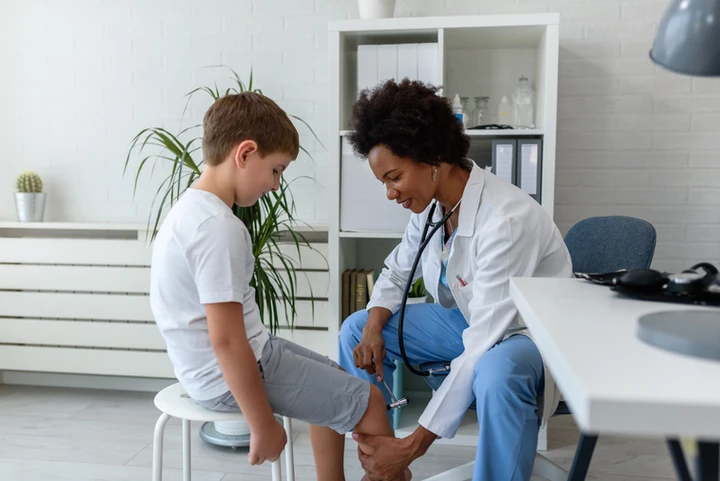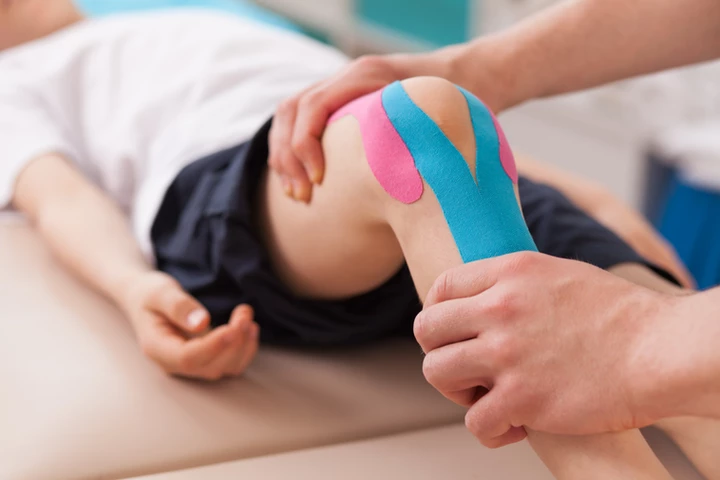- Why the Phase 1 rehab after ACL surgery involves immediate post-surgery recovery up to two weeks, focusing on regaining knee range of motion, controlling pain and swelling, and starting gentle exercises to protect and strengthen the knee.
- What are the recovery and rehabilitation pain-free exercises that are focused on knee extension, strengthening, and stability.
- How the Progress to Phase 2 is indicated by improved quad strength, full knee extension, walking without crutches, and minimal knee swelling.
Once you decide to have surgery for an ACL injury, you’re likely to have many questions related to your recovery time, the rehab process, or when you’ll be able to return to your normal routine.
First of all, it’s crucial that you discuss any and all questions about your upcoming ACL surgery with your surgeon and medical team. He or she will be able to share detailed information about the procedure, your anticipated recovery time, and any special precautions that you’ll need to take after surgery.
These conversations will help you mentally prepare for the recovery ahead. While surgery for an ACL tear doesn’t take very long (about 1-2 hours), it is still considered to be major surgery. Make arrangements with your school or employer to take some time off, especially
right after surgery. Ask family or friends to help you with meals, household duties, and transportation to rehab since you won’t be able to drive.

Rehab begins the day after your ACL surgery. If you’re unsure what to expect, don’t worry. All of your concerns about recovery expectations and phase one of ACL recovery and rehabilitation will be addressed here in Part 1 of our series on ACL injury and rehabilitation.
Let’s get down to business, starting with what you should expect immediately after surgery for an ACL tear.
Expectations for ACL Tear Surgery
Initially, ACL surgery will make your knee feel weak and unstable. This is caused by pain and swelling related to the surgery. You’ll follow up with your surgeon a few days later to have your incision and bandages checked.
Specific precautions and instructions will be made by your surgeon, and it’s imperative that you follow them for the best outcomes after ACL surgery. Most surgeons will protect the knee in a brace that extends from your ankle to your thigh. For the first few days, your brace is locked in extension, meaning you won’t be able to bend the leg. As your strength and knee control improve, your brace will be unlocked to allow for more movement. The brace can be removed for showering and exercising unless otherwise directed by your surgeon.
It’s likely that you’ll leave the hospital with crutches to help you move around for the first few weeks. Depending on your specific graft (see this post for more information on graft sites), your surgeon may give you specific instructions for weight-bearing on your affected side. You can expect partial weight-bearing instructions ranging from 50-75%, followed by full weight-bearing by the end of the second week after surgery.
Controlling Pain and Swelling With ACL Tears
For the first few days after ACL surgery, you may notice drainage and blood on your knee bandages. This is normal and necessary to avoid excessive swelling in the joint. You should monitor your bandages and be sure to keep the incisions dry until your stitches are removed.
Swelling after ACL surgery is managed by following these instructions:
- Avoid sitting with your leg down on the floor. Instead, elevate it on several pillows.
- Apply ice 4-5 times per day for 20 minutes. Your surgeon will have further instructions regarding cold therapy.
- Perform ankle pumps to lower the risk for blood clots and swelling in the ankle and foot.
- Refrain from overdoing it for the first few days. Rest, ice, and elevate your leg as much as possible.
Recommendations for pain control will vary from surgeon to surgeon. You may be sent home with prescriptions for narcotics, anti-inflammatory medications, or nonsteroidal anti-inflammatory medications. Be sure to follow all instructions as directed on the prescription labels.
Phase 1 ACL Recovery and Rehabilitation
Phase 1 ACL recovery and rehab cover the first few days immediately following surgery, up to two weeks. During this phase, you will begin rehab as soon as you return home and see your physical therapist about once or twice a week.
The main goals for Phase 1 are to protect the knee, encourage healing, regain full knee extension (straightening), and be able to bend the knee to 90 degrees. These goals are accomplished by controlling swelling and pain, taking care of the bandages, and introducing easy range of motion exercises.
You may be wondering why bringing back a range of motion is encouraged before knee strengthening. This is because the most common complication after ACL surgery is loss of motion, especially knee extension. Loss of knee extension can cause a limp while walking, weak quads, and knee pain. Therefore, all early ACL recovery protocols focus on regaining range of motion as soon as possible.

Common Exercises for Phase 1: ACL Recovery and Rehabilitation
All exercises should be relatively pain-free. Additionally, your physical therapist will perform something called patellar mobilizations, which is a fancy term for making sure your kneecap can move well.
1. Knee extension stretch
- Position the heel on a pillow or rolled towel with the knee unsupported. Make sure the heel is positioned high enough to lift the thigh off the table.
- Stay in this position for 10 to 15 minutes.
2. Heel slides with towel
- Lie on your back and place a towel underneath the heel of the operated knee.
- Slowly pull the heel toward your body, bending the knee. Once you feel a comfortable stretch, hold for 5 seconds.
- Straighten the leg by sliding the heel downward. Hold for 5 seconds and repeat.
3. Isometric quad contraction
- Straighten the operated leg in front of you.
- Press the knee down towards the ground. Hold for 5 seconds and then relax.
4. Straight leg raise with the knee brace
- Lie on your back and bend the unoperated knee. Straighten the operated leg and make sure the knee brace is locked in extension.
- Performing an isometric quad contraction with the leg to “lock” the knee and prevent excessive stress on the healing ACL graft.
- Gently lift the leg to about 45-60 degrees. Hold for 5 seconds.
- Slowly lower the leg back to the starting position. Relax the muscles.
- Once you can hold the quad contraction without allowing the leg to bend, known as a quad lag, then you can do this exercise without the knee brace.
5. Hamstring curls
- Remove your leg brace and lie on your stomach.
- Bring the heel of the operated leg towards the ceiling, stopping at 90 degrees. Hold for 5 seconds.
- If this is difficult, gently use the other leg to assist.
*A note about the hamstrings: For patients who have had ACL reconstruction using the hamstring tendon, it is important to avoid excessive stretching of the hamstring muscles during the first six weeks after ACL surgery.
6. Weight shifting exercises
- Stand behind a countertop or table and place both hands firmly on the surface. Position your feet about hip-width apart. Keep your knee brace on.
- Practice slowly shifting your weight from side to side. This helps your operated leg to regain stability and control at the knee joint.
- Hold each weight shift for 5 seconds.
By the end of the first week, you should have regained the ability to fully straighten the knee, bend at least 90 degrees, and regain some control while walking. At this point, you may be able to wean off of the knee brace, but be sure to check with your surgeon or physical therapist first.
During the second week after ACL surgery, you will continue to focus on knee extension in various positions and work towards 90-100 degrees of knee flexion. Your physical therapist may add new exercises, like the ones below, to further develop your strength and knee control.
1. Mini squats
- Remove your knee brace. Stand behind a countertop or table and place both hands firmly on the surface. Position your feet about hip-width apart.
- Gently bend at the hips and knees, as if you are going to sit down on a high chair.
- Making sure your heels remain on the ground, pause for a few seconds before rising back to the starting position.
2. Heel raises
- Stand behind a countertop or table and place both hands firmly on the surface. Position your feet about hip-width apart.
- Using your hands for stabilization, gently raise the heels off the floor and onto the balls of your feet.
- Hold for 5 seconds and ease slowly back down.
3. Stationary bike
- Riding a stationary bike is encouraged when you can bend your knee at least 100 degrees.
- The seat position should be set to where the ball of the foot is in contact with the pedal with a slight bend at the knee when the pedal is closest to the ground.
- Use little-to-no resistance for the first few rides.
4. Side hip abduction
- Lie on your side with both legs straight. You should wear your knee brace for this exercise if you’re unable to complete a straight leg raise.
- Keeping the toes pointed forward, raise the top leg about 10-12 inches towards the ceiling.
- Pause for a few seconds and slowly return to the starting position.
- Practice on both sides.
5. Bridging
- Lie on your back and bend both legs comfortably. Arms should rest at your sides.
- Squeeze the glutes as you lift your hips towards the ceiling.
- Pause at the top for 5 seconds and lower back to the starting position.
6. Modified deadlifts
- Standing with your feet about hip-width apart. Using light dumbbells or a kettlebell, hold firmly onto the weight.
- Keeping your back and legs straight, slowly lower the weight towards the ground. Push your hips back while keeping the heels on the ground.
- Stop when you’ve reached the middle of your shins.
- Squeeze your glutes as you push your hips forward to return to the starting position.
Progressing to Phase 2 ACL Recovery and Rehabilitation
Remember, recovery happens at an individual pace, and it’s difficult to predict recovery timeframes for everyone who suffers an ACL injury. However, there are a certain number of markers that suggest you’re ready to move on from Phase 1 after ACL surgery.
Signs that you are ready to begin Phase 2 of ACL recovery and exercises are:
- Quad strength begins to return and you’re able to do a straight leg raise without quad lag
- You can fully straighten your knee
- You are able to walk normally without crutches
- There’s minimal-to-no knee swelling
The doctors of physical therapy at Myokinetix, a premier physical therapy clinic in Essex County, NJ, know exactly what to look for when it comes to helping you through each phase of ACL recovery. Let their years of experience and expertise in working with athletes with ACL injuries put your mind at ease so you can get the results you deserve.
All rights reserved. No part of this publication may be reproduced, stored, or transmitted in any form or by any means, electronic, mechanical, photocopying, recording, scanning, or otherwise without written permission from the publisher. It is illegal to copy this book, post it to a website, or distribute it by any other means without permission.
